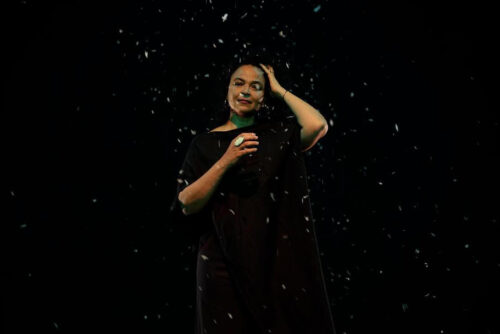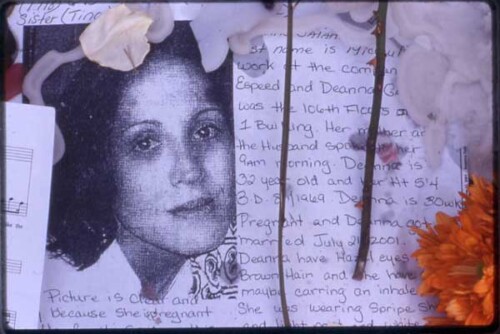Introduction
Saraswathi, Our Mother
Our mother was in her late sixties when she and a group of friends ranging from their mid-fifties to early seventies traveled together to sing in the second-tier town of Coimbatore in deep South India. As part of the journey, they chose to stop at a coconut farm to have their lunch. There they delighted in music, nature, and their own joyous selves in exuberance. To us, this is a vision, a gift of aging, of girls young at heart, having fun together with nothing hindering them. We can see them, comfortable in their relationships with each other, with the earth and the sky. We can hear their boisterous laughter and charming quick repartees as they pull each other’s legs. The photos of our mother in pigtails, her young, intense gaze, her delightful laughter, her playfulness, which we remember from our childhood, come alive in our imagination as she laughs open heartedly into her seventies. The incredible visual of our mother in her late sixties running with peacocks on a farm joined by her friends is charmingly inspirational. This article is the seamless story of a woman forever young at heart.
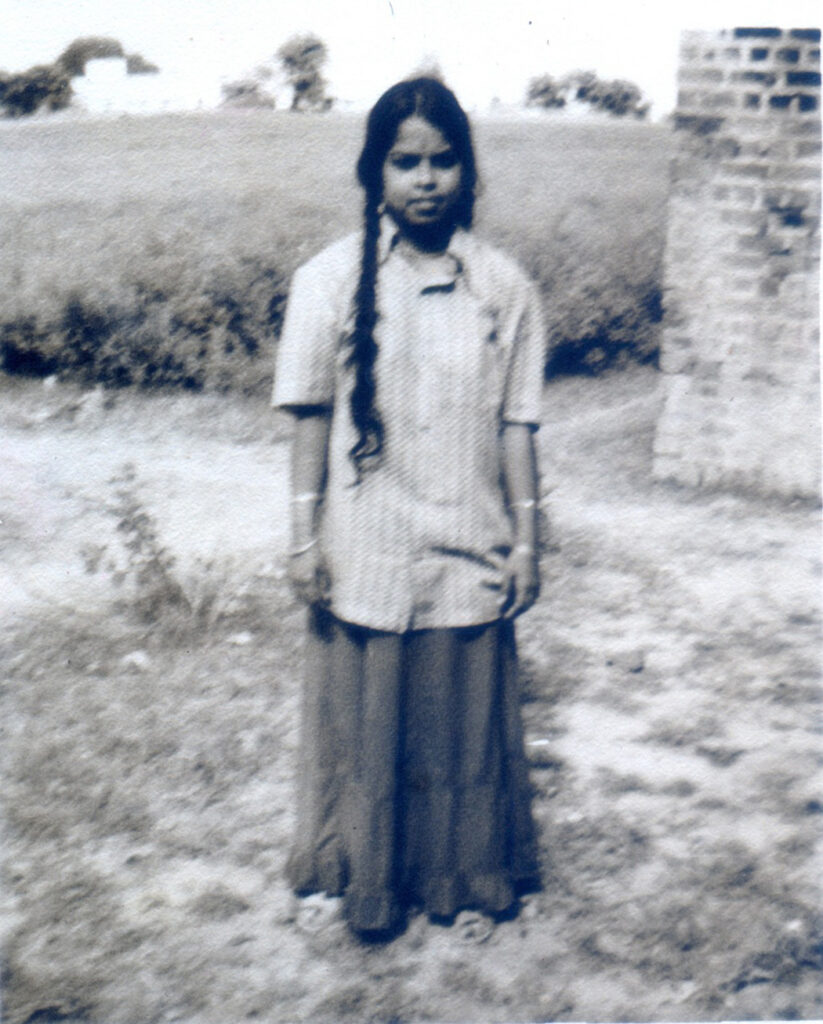
A fiery feminist now in her seventies, Saraswathi, our mother, infused the Tamiḻ poet Bhārati’s vision of a bold, energetic woman, ‘Putumai peṇ,’ thriving in the world into our very beings as she raised us. Named after the Hindu goddess of learning, our mother, Saraswathi, formally studied up to eleventh grade in the late 1960s, being unable to afford higher education. Coming from very humble beginnings, her endless creative spirit adorned our everyday lives with clothes that she sewed for us, healthy cooking, and endless artmaking projects. A master of eight Indian languages, traveling with her within India is an amazing experience as she seamlessly communicates in multiple languages. Regardless of the travails of her life, singing has given her tremendous joy and we all feel its ripples reaching out and enveloping us.
Saraswathi married in her mid-twenties and traveled with our father across three different states in India while navigating very complex social relationships and responsibilities. In the early years of their marriage, she had little time to follow her own passions. In the 1990s, when she was in her early forties, she found a way back to music and started learning technologies to record, document, and disseminate the works of her teachers. The focus of this article is on isai vazhipādu (singing worship) and aging in one individual, our mother, exploring how her singing practice allows her to subvert social expectations of aging in the feminine. As Pechilis observes, “The shift from agency to subjectivity need not negate consideration of women’s authority.”1 Continuing this line of thought, Khanna underscores and opposes the creation of one monolithic feminist ideal for Hindu women, especially one framed by Western perspectives, noting that India’s women are too unique and diverse for that.2
Isai Vazhipādu
Hindu religious and ritual practices vary widely between individuals even within the same family. Delineating these differences is beyond the scope of this paper, but we would like to note what differentiates Carnatic music concerts from Hindu devotional forms of singing that fall partially into the form of worship through singing, or isai vazhipādu. In the latter, the intentionality of the singing, from experience to participation, is vastly different from traditional Carnatic music stage performances by musicians.3 In isai vazhipādu, the devotee is part of the performance, singing along, training, allowing themselves to be fully immersed in embodied experiences of their loved deity of worship. Whether a person sings as part of a group or alone, the act is considered a performance for the deity as audience. Further, unlike Carnatic music, there are no monetary benefits. Given its close links to the Tamiḻ philosophical traditions, isai vazhipādu constitutes a model of ongoing commentary on these poetical works through present day performances at temples, gatherings, and festivals with a special focus on modes of devotional subjective spaces through the poet’s interiority. The commentaries are provided by the teacher, who is an expert on the poet and/or interpreter, who helps participants grasp the hidden meaning of the poems through literary, grammatical, and musical interpretations.
As an individual, our mother, Saraswathi, is deeply invested in bhakti and the particular Tamiḻ model of singing worship called isai vazhipādu. Her access to these isai vazhipādu groups started by invitation in the early 1990s as part of offering prayers in temples. Her participation has been sustained by her own love for music and bhakti, which complemented each other in her practice. Saraswathi learned Carnatic music in her childhood, though she never graduated from a formal training program or performed Carnatic music on stage.
The history of women practitioners in the general tradition of singing worship across the Indian subcontinent has been documented and studied as part of Poetry,4 Bhajan, and Kirtan traditions,5 and the syncretic singing of the Bauls.6 However, there are distinct differences between each of these traditions and the Tamiḻ Saiva tradition of isai vazhipādu. In the Tamiḻ poetic tradition (marapu), singing devotion (bhakti) or isai vazhipādu is traced back to Karaikkal Ammaiyar, the ca. 550 CE saint poetess and devotee of Śiva (Civaṇ in Tamiḻ) whose love for the God Śiva was so tenacious and caring that the God himself is believed to have addressed her as ammai, the mother of God Śiva himself.7 Karaikkal Ammaiyar’s poetical works are also a source of information about early Tamiḻ music,8 and two of the saint’s poems are set to tunes in traditional Tamiḻ music, but they are not performed, according to a senior award-winning professional singer of devotional hymns, Dharmapuram P. Swaminathan.9 To our knowledge, there are no studies specifically conducted of women practitioners of the Tamiḻ isai vazhipādu tradition. There are studies by Hornabrook of Tevāram singing by male Ótuvārs in Saiva temples in London.10
This study of our mother in relation to the field of religious studies raises interesting questions about applying feminist theory to South Asian religions in the context of aging and ritual practice. For instance, Pechilis points out that “theoretical studies more specific to the study of South Asia and the West include perspectives on postcolonialism and race and their relationship to issues of localization that are prominent in feminism.”11 For instance, how does a mother and wife exert agency and find her identity throughout the process of aging in a society that values youth and beauty, and foregrounds the duties of wife and mother as the essential roles of a woman? How can one read the rise of feminine consciousness in Hindu religious texts and can those passages be used to subvert predominant discourses around the feminine in the context of aging? From the perspective of localized feminism, there is a need to create a nuanced view of tradition and innovation within the practice of devotional singing by women. The aging body adds another dimension to these questions within Hindu religious thought, where the connection to earthy energy as an expression of feminine agency is not pursued, and instead there is a focus on embodied immersion in universal consciousness.
Tamiḻ Musical System and Isai Vazhipādu Tradition
The bhakti movement was a significant religious movement originating in ancient Tamiḻ Nādu in the fifth century CE. The movement emphasized loving devotion as a means to salvation. The hallmarks of the movement were significant works of poetry in the Shaiva and Vaishnava traditions. Despite critical debates and sectarian tendencies, bhakti remains a unifying force among Hindus, providing a bridge across castes and languages in several contexts. Bhakti, or devotion, is a key ingredient of isai vazhipādu. Ram Dass observes that “[b]hakti explores the tension between higher consciousness and action in the world, as well as the oscillation of human emotion in sensing both identity with and separation from God, of which a corollary is the imagination of God as both formless and with form.”9 The isai vazhipādu tradition celebrates the lives and poetical works of the Saiva saints and leans towards Hindu Advaita Philosophy as propounded by Adi Shankara. Ramanujan writes that the saints’ “pilgrimages, their legends, and their hymns literally mapped a sacred geography of the Tamiḻ regions and fashioned a communal self-image that cut across class and caste.”12
The sixty-three saints or Nayanmars, including three women saints, worshipped Siva and were key influencers of the bhakti movement in early India. They were from various backgrounds, including upper castes, lowers castes, and Dalits.13 Isai vazhipādu was originally based on the Tamiḻ musical system of paṇs. According to Rowell, “The distinctive features of the Tamiḻ modal system include: the particular selection of modes; their circular projection along the twelve houses of the Zodiac which seems like an attractive possibility for scale-building but one that I have not found anywhere else in the world; and most intriguing of all, the apparent contradiction between the various nested divisions of the octave: into twenty-two microtones, twelve chromatic ‘houses,’ seven diatonic scale degrees, and a further selection of five pentatonic degrees.”14 The twelfth century Periyapurānam, for example, describes the so-called yāl-breaking paṇs, which are melodies too complex and fluid to be accommodated by a harp.15 The poem-songs from the isai vazhipādu tradition are currently set to the ragas of Carnatic music since only a few paṇs are used by Ótuvārs, and even those are often mapped to the closest or equivalent Carnatic ragas.
There are currently no available academic studies of the political, socio-cultural, and gender issues of isai vazhipādu traditions and we, the authors, would like to be cautious in extrapolating these findings to isai vazhipādu communities generally because the circuits and models of performance of Carnatic musicians and isai vazhipādu communities are significantly different.
The Role of Culture in the Formation of an Aging Self and Identity
The role of culture in mediating identity has been studied in young people across continents. Studies of aging populations, on the other hand, have not focused on the role of culture in reshaping the aging self and identity. Aging creates a performative void in the self and older adults often have to find new strategies to engage meaningfully with society while continuing to feel productive. Our mother encountered this challenge as her family responsibilities changed and many aspects of her social life acquired changes and new challenges. She was also confronted with the physical signs of aging: wrinkles, grey-silver hair, and bone density loss, among other things.
However, for our mother, on the other side of the aging coin was her never-ending quest to embrace technology. Following her natural intelligence and inclination towards technology, she engaged with videography and photography to document many key music festivals of her own music group. As we entered our thirties and early forties, we watched our mother’s body change in the natural process of aging while her mind vividly adapted to new technology. She adeptly learned video recording, editing, and photo manipulation through software such as Photoshop, and she learned how to use social media to share her work and resources with her communities.
Saraswathi’s Playfulness in Adopting Technology
Through the 2010s, our mother enhanced and developed her skills in multiple technologies and social media platforms. Through the COVID-19 pandemic, her skills have been instrumental in supporting and building her music community’s engagement through WhatsApp, social media, YouTube, and other online platforms like Google Meet, Zoom, and Webex. In an earlier chapter of her life, in the 1970s and 1980s, Saraswathi had chosen to be a homemaker as childcare was difficult to find where we lived. Decades later, reflecting on her reengagement with music, she said,
Life had changed much in the fourteen years since I chose to be a homemaker. I wanted to search for my own identity as a woman, beyond the roles of my identity as mother, wife, daughter, daughter-in-law. I wanted to find a world in which I would have an identity very different from all these roles I played. I wasn’t looking for a job, but a space to redefine myself again. Introduced by my daughter to this group and learning and performing devotional music took me back to my early teenage years when I was training in music. It allowed me to find a new journey of self.16
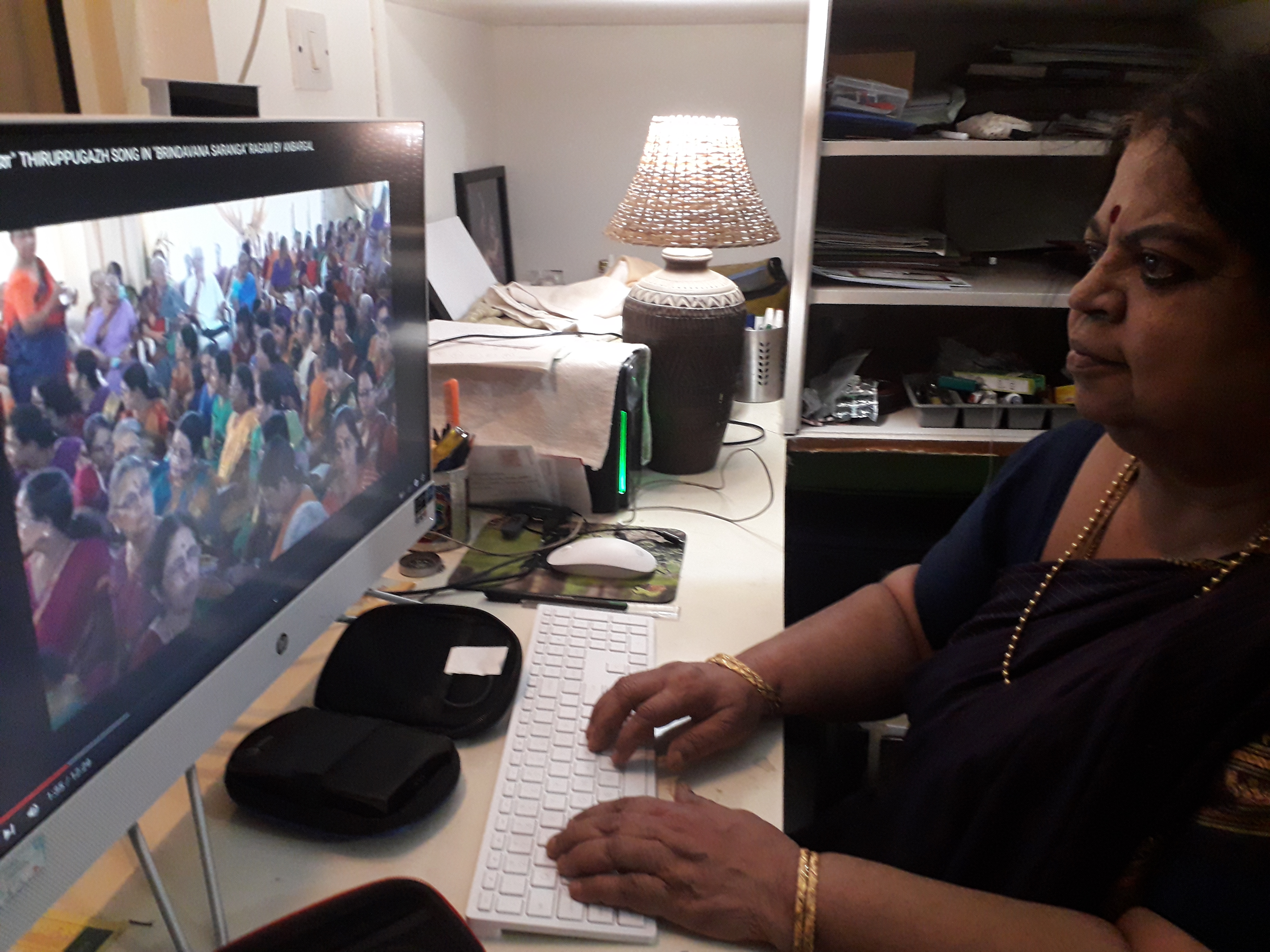
I also felt empowered when I began to learn technology to record my teachers and share the recordings among my friends so we could practice the traditional grammar and form taught to us by our teachers. Starting with tape recorders and cassettes, I moved on to floppy disks, CDs, and digital forms, then worked with a YouTube channel, and now use WhatsApp, Zoom calls, and other means. My ability to use technology to connect with my friends in the community, some who are in their eighties, some in their fifties and sixties and seventies, gives me pride and happiness. More than anything else, I feel like this is my way of empowering other women while also paying my respects to both the tradition and my teachers. I am very happy I learned how to record, edit, and use YouTube and Facebook and also to set up Zoom meetings. I was able to use these skills to set up online gatherings and maintain our connections. I was also able to help with difficult situations. When we were all struggling in the pandemic with so many people dying and dealing with the shortage of oxygen cylinders, I was able to post messages about resources through these online groups to support people in need. The pandemic made us feel that even if we live next door to each other, we are far away unless we are able to use the internet in a community way.17
Saraswathi encourages her peers, supports older octogenarians, and continuously documents and shares their work in the community YouTube channels. Her musical communities pursue aesthetic and creative excellence on one end and spiritual journeys on the other. The work sustained all the members through the difficult periods of the pandemic when they had to remain separated from their families. The stabilizing nature of the intergenerational networks helped people manage mental health challenges as well as practical concerns, like sharing critical medical information, access, and resources. These musical communities bring their members together through both the mundane and the sacred. These connections are deeply meaningful and life changing, providing purpose, strength, and dignity through traditional values and principles.
Social and Traditional Constructs of Feminine Conduct and Aging
Westerhof, Whitbourne, and Freeman have argued that the aging self should be studied in its cultural context. Through a cross-cultural study of American and Dutch perceptions of aging, they found that personal experiences of aging were related to identity processes and self-esteem.18 By focusing closely on the life of a single individual, Saraswathi, our mother, in her cultural context, this article charts the creation of an aging self through two aspects of exterior life: (1) social and traditional constructs of feminine conduct and aging; and (2) her personal experiences of musicianship and musical communities. Our mother’s navigation of the broader public and more intimate worlds work together to fashion an aesthetic self, one empowered as an individual and as an inspiration to singers across generations. As a practitioner of varied musical and poetic traditions that span the period from fifth century CE to the early nineteenth century, our mother has shaped her aging self as a person in the broader society as well as a performer on stage. Her experience also provides an opportunity to explore feminist interpretations of gender as a cultural construct, beyond gender conditioning, child-rearing and mate-maintenance. Her experience allows us to ask how a woman might navigate the multiple meanings of agency in the aging sphere, and how her engagement with an ever-changing technological world can be a tool to build community and coping strategies.
For the most part, studies of gender remain focused on narrative representations set out by a modernist agenda. These studies tend to convey an inherent bias that modern equals progressive. In this hierarchy between the modern and the traditional, the traditional tends to be discarded. As Khanna laments, “It is this opposition that has resulted in the marginalization of our rich cultural resources, such as in religious scriptures and texts, vital symbols in our oral heritage, primal communities and grassroot traditions, the female-centered knowledge systems on traditional ecology, healing arts, women’s protection of food diversity, women’s representations of collective memory expressed in oral narratives, songs, dances, and aesthetic systems of creative arts of women.”19 Khanna argues for “emphasizing the immediacy of women’s conscious experience and oral histories of women where they define their own construction of gender.”20
In the framework of the traditional society, the individual is guided to focus on community participation, social responsibility, and using privilege for the greater good. In becoming a musician of traditional poetic compositions, Saraswathi found the freedom to interpret and perform her gender. The Goddess within the tradition is viewed both as the consort of the male deity and as the representation of the energetic driving force of the male deity. This dual conception released Saraswathi from viewing herself only in the performative role of a wife, allowing her to reshape her sense of self as a musician on stage. Her identity as a musician provides a basis for accessing her creativity, humility, expressivity, spiritual experience, the transformation of her soul on its journey, her ability to connect with the gods of her choice, her ability to fashion herself out of tradition, her pride in being a performer, and her deep gratitude for her gurus. This self is a complex amalgam crafted from many layers of diverse actions performed in the singing practice, including:
- Preparation: physically and mentally
- Training: learning and practicing
- Being moved: being in her own world of transitions and transformations of the soul interpreted through the Hindu concept of Atman/Anma (Tamiḻ)
- Performing: being on stage, finding courage and voice to meet an audience
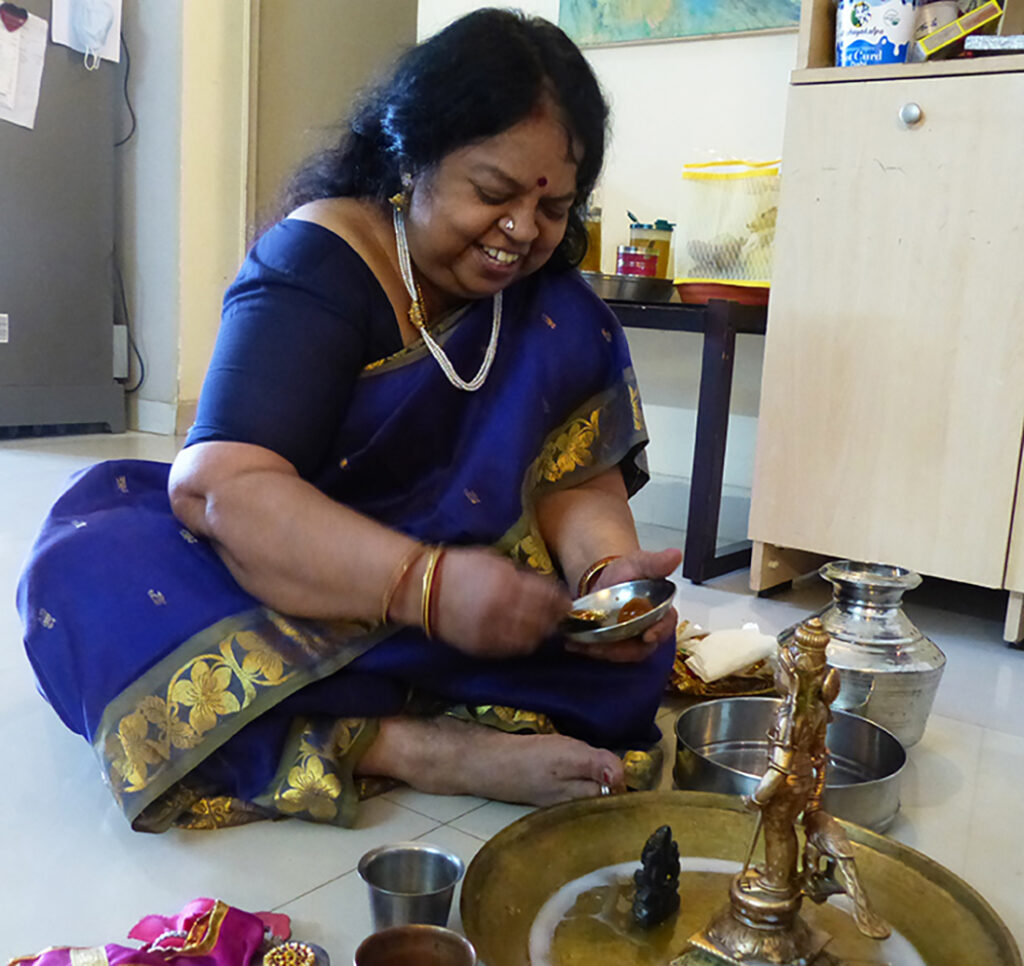
Each action requires her to be present and prepared in different ways. Each action takes her through different experiences and emotionality. These emotions are rich, textured inner spaces that bring forth a fount of youth and freshness alongside her natural maturity and ways of making meaning. She traverses the multiple requirements of her singing practice while juggling her roles as a mother, grandmother, wife, sister, sister-in-law, friend, student, and others. This ability to negotiate multiple presences and selves and meet their demands, always with acute awareness, quick thinking, and mastery, gives her a unique relationship with time.
Personal experiences of musicianship
Saraswathi is a practitioner of varied musical and poetic traditions that originate from the fifth century CE to the early nineteenth century and have been orally transmitted through the generations by descendants of the original composers. In this article, three songs from her repertoire of poetic works from the Saiva bhakti canon are highlighted for discussion.
Video 1
In this video, Saraswathi is singing the Tevāram21 “Mādar pirai IV.003” to the melodic scale (raga) Navaroj; panmurai Gandhāram, composed by saint-poet Appar (570 CE). In the song, the immense longing of the saint-poet to see the divine couple, Shiva and Shakti, results in a rapturous moment of seeing the divine in every particle, flora, and fauna in the environment. For Saraswathi, learning the Tevāram hymns and singing them over the last twenty-five years has been creatively rewarding in two distinct areas: (1) music and emotive landscape; (2) poetry and creative interpretation.
In the first area of music and emotive landscape, the Indian classical music tradition of melodic structure (raga) is known to evoke a landscape of emotions.22 Saraswathi has chosen to highlight the contours of wonder and joy in her rendition of ”Mādar pirai.” Raja writes, “A raga expresses different rasas at different tempi, different levels of melodic density and in different regions of the melodic canvas. To this extent, the musician has a choice—whether made consciously or otherwise—in terms of which of the rasas should dominate the presentation.”23Małgorzata Osowiecka and Alina Kolańczyk, “Let’s Read a Poem! What Type of Poetry Boosts Creativity?,” Frontiers in Psychology 9 (2018), https://doi.org/10.3389/fpsyg.2018.01781.)) This notion deeply penetrates the philosophy of improvisation within the tradition and will be revealed more clearly in Video 2 where Saraswathi is moved to tears as she sings a different composition.
In the second area of poetry and creative interpretation, Saraswathi is singing in Tamiḻ, a language she is closely bound to culturally, philosophically, and in her everyday social life in Chennai, the capital city of the state of TamiḻNadu. Tevāram poetry is replete with metaphor and metonymy and incorporates three distinct linguistic styles of the poet-saints Appar, Sundarar, and Sambandar. Osowiecka and Kolańczyk showed that depending on the metaphors, style, and stability of poetry, exposure could either increase or decrease creativity levels in the readers. The authors also discuss possible individual differences that influence the reception, understanding, and enjoyment of poetry as an art.[25] For Sarawathi, the Tevāram’s philosophical and poetic elements have extended their meaning into her lived experience as a musician navigating the social milieu. As her poetic interpretations change course, the rasa or mood she chooses to highlight through the rendition also takes on different shades. Thus, she fine tunes her aesthetic grammar by making creative and melodic grammar decisions in response to her artistic intent. The act of interpretation is another essential aspect of creative practice. Interpretation is subjective, drawn from her plethora of life experiences.
Video 2
In this video, Saraswathi is singing the “Tiruppukaḻ,”24 song 251: “Edhu Buddhi Ayya,” in raga Hamsanandi and Tala Misrachapu, composed by poet Arunagirinathar (fifteenth century). In this song the poet implores the divine to clear his intellect and soul and to keep him close. Saraswathi emphasizes the mood of divine compassion in her rendition. The video captures her being moved to tears as she sings. This song is also rendered by other musicians with an emphasis on the tone of rhetorical argument taken by the poet.
Video 3
In this video Saraswathi is singing the composition “Yoga Yogeswari” by Oothukadu Venkata Subbiar (seventeenth century) on the Goddess Kamakshi of Kancheepuram. The composition is set to Raga: Ananda Bhairavi and Tala: Kanda Triputa, a nine-beat cycle. While the song itself extols the Goddess, the significance of the composition lies in its adherence to the Sakta tantra philosophy where the form of the Goddess is abstract energy, the Sri Chakra or the Sri Meru.25
These three videos sample the creative decision-making process that is involved in the rendition of each song. They also allow us to glimpse the improvisation mechanisms Saraswathi has developed through her engagement with original texts, Ótuvārs (special temple singers who are descendants of a given musical heritage), teachers, and the larger community of musicians.
To Saraswathi, her musical self is an essential, integral, and critical part of her identity as a human being and as a woman. This musical self is a vulnerable, dynamic, growing, learning self that allows her to constantly strive for excellence and aesthetic integrity in her work and beingness. This active construction of self keeps her motivated. Her aesthetic pursuit ensures that she strives to take care of her health, her voice, and her physical capacity to perform three to four hours regularly. It gives her the endurance and will to be an active learner and to continuously develop her capacity as a musician. Within the traditions of bhakti poetry and worship, the aesthetics of the musical self also extend into daily rituals and practices that include cleaning the deities, bathing them, and dressing them up while singing to them. The aesthetic self emerges at the intersection of music and spiritual pursuit, providing her with a determination to make the best out of every single day, touched by beauty, hope, and purpose.
Musical communities
Ramanujan observes, “Even one’s own tradition is not one’s birthright; it has to be earned, repossessed. The old bards earned it by apprenticing themselves to the masters. One chooses and translates a part of one’s past to make it present to oneself and maybe to others.”26 Ramanujan’s prescient writing on the cultural translation of tradition and its ability to refine and transmute the individual self is a visible everyday phenomenon in the aging musical communities in which our mother takes part. In TamiḻNadu, South India, spiritual musical communities are a norm. There, men and women gather to discuss, teach and learn bhakti poetry as well as perform in temples and music halls to diverse audiences. In our mother’s musical communities, age groups vary from children to octogenarians. These intergenerational communities lend themselves to a support network of creative and spiritual purpose, everyday relationships, and friendships, and they extend across a larger network of poetic communities and temple spaces of TamiḻNādu. They also perform for events that celebrate milestones, including marriages, births, and celebrations of seventieth and eightieth birthdays. At other times they perform in public halls to larger audiences. (One particularly memorable performance for our mother took place at the yearly December music season in Chennai, TamiḻNādu in 2019.) Lastly, they perform to the gods and goddesses in the temples, traveling across South India where they are invited to perform in sacred spaces, offering music as worship to delight the divine.
We sometimes hear our mother chatting with her friends before their music sessions and classes begin. They exchange stories of their personal lives and ideas for new recipes, all with a healthy dose of pulling each other’s legs, tricking each other with something benign and silly, causing the group to break into uproarious laughter. Amidst this mundane reveling, their conversations drift, their hearts open, and they begin to dwell in the depth of the bhakti poetry they are about to sing. Seamlessly, they switch between the mundane and the divine. Together they walk into a haloed world of music where they exit the everyday world and enter a superreal world, a world of mystic poetry, of breaking into tears, moved by the depth of tradition, their own inner transformations, and the respectful love they feel for the music masters of the tradition. Kalyanasundaram and Kalyanasundaram write, “The Tamiḻ poetical tradition is very conscious of and celebratory of this tradition, the marapu. Tamiḻ poets also consider it a big part of their tradition to inspire and create the next generation poet. Poets and scholars within the Tamiḻ tradition to this day feel strongly about not losing the marapu.”27 The continuity of tradition is established in practice, even as times and mores of reading and writing have changed. These worlds of singing allow the practitioners’ smaller everyday selves to merge with their greater sacred selves. When they return to their lives, they come glowing, empowered, ready to deal with the mundane, take on new challenges, accept limitations, and still strive to overcome and create anew.
These aging women don the role of guardians to the poetic and musical heritage. They see this new role as svadharmā, an individual’s place within both the social and cosmic order, imparted with responsibility. In this unique position, the gender dharmā (Dharmā is defined as righteous action derived from the cosmic order of harmony) becomes malleable and permeable in these aging women’s hands, giving them the power to sculpt and define themselves. As Khanna explains, “[I]n the Hindu context there is no such category as an absolute dharma. Even the views of the dominant tradition that appear to be absolute are displaced or transformed by an endless series of expropriations and reappropriations of meaning.”28
Discussion
Ten years ago, our mother challenged us when we mentioned she might be growing old. She was entering her sixties. She defied our logic of aging and demanded we watch how she would live her life. In her own choices, she continuously experiments, inquiring what it means to age, how she wants to age, what she is willing to accept, what she will change, how she will modify the given, how she will continuously regenerate and renew herself to find new perspectives about aging. As a reiki practitioner and healer, she continuously works with energy to uncover reserves of strength and freedom and recalibrates the body. She practices meditation to find her balance anew. She crafts her personality to remove things that distress her and to find a quietude in which she can practice her music, a time when she finds all that gives her joy and peace. As an artist, she spends hours crafting her musician self, holding her own through hours of practice, learning, and performance. We find this process immensely empowering. It enables us to question our own assumptions about aging.
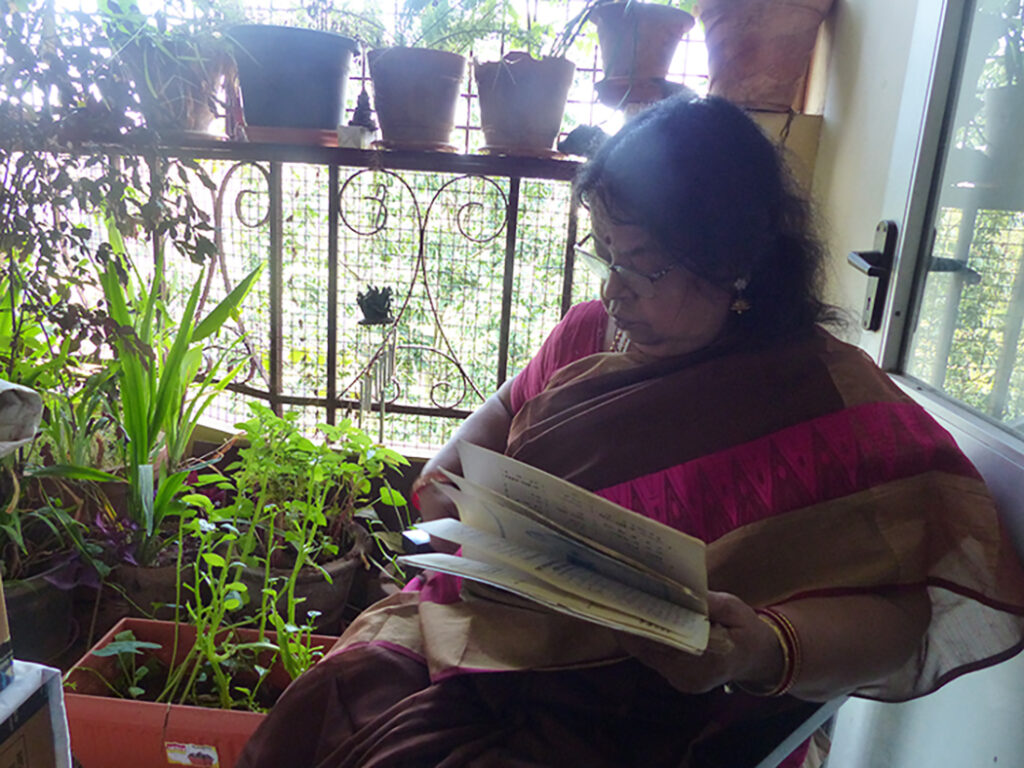
We are grateful to our mother for pushing our boundaries in perceiving aging, questioning our biases, slashing our stereotypes, and keeping us on our toes guessing what new worlds she may uncover in yet another day. It has been like following an adventure with hidden secrets and layers, not knowing where the paths will lead or to what magical possibilities. Our mother has often asked, At what age does aging start? In turn, we have asked, How do aging people see themselves? What language can one use to make meaningful conversation about aging? Together with our mother, we slowly learned to see the world of aging through her eyes, with respect, wonder, gregariousness, affection, and laughter.
In our mother’s words,
Aging is fine craftsmanship with deliberation, creativity, experimentation, and inspired insights. It is a process of learning from others who hold similar values and a willingness to constantly redefine and rearticulate life in light of continuing changes. Aging is like the music that guides you, something to be worked with, prepared, trained, transformed, and performed on a daily basis with care and affection for the self. Aging is a language that must be constantly challenged and innovated because, as yet, we do not know what the day will bring.17
Works Cited
Ayyangar, Rangaramanuja R. History of South Indian (Carnatic) music from Vedic times to the present, 54. Madras: R. Rangaramanuja Ayyangar,1972. Cited in Richard Kent Wolf. Review of Singing the Classical, Voicing the Modern: The Postcolonial Politics of Music in South India, by Amanda J. Weidman; From the Tanjore Court to the Madras Music Academy: A Social History of Music in South India, by Lakshmi Subramanian. Ethnomusiciology Forum 17, no. 2 (Nov. 2008): 287-292. http://www.jstor.org/stable/20184627.
Dass, Ram. One Liners: A Mini-Manual for a Spiritual Life, 63. London: Piatkus, 2003.
“Devi.” Oottukkadu Venkata Kavi, n.d. https://venkatakavi.org/devi.
Kalyanasundaram, S. Saraswathi editing group singing videos. 2021. Photograph. Personal collection. Bangalore, Karnataka, India.
Kalyanasundaram, S. Saraswathi reading Tevāram poetry. 2021. Photograph. Personal collection. Bangalore, Karnataka, India.
Kalyanasundaram, S. Saraswathi singing and adorning Murugan before a Tiruppukal singing session. 2022. Photograph. Personal collection. Bangalore, Karnataka, India.
Kalyanasundaram, Srisrividhiya, and Sandhiya Kalyanasundaram. “Embodied Landscape Language: Tamil Poetry and Aesthetics .” Indian Literature Journal, September 2020.
Kalyanasundaram, V. Saraswathi in the first month of marriage. 1977. Photograph. Personal collection. Ahmedabad, Gujarat, India.
Khanna, Madhu. “Reclaiming Women’s Indigenous Heritage .” India Seminar, 2014. https://www.india-seminar.com/2014/659/659_madhu_khanna.htm.
Khanna, Madhu. “The Goddess-Women Equation in Sakta Tantras .” Essay. In Faces of the Feminine in Ancient, Medieval, and Modern India, 110. Oxford: Oxford University Press, 2000.
Kulendran, Gnana. “Karaikkal Ammaiyar (Dr Mrs Gnana Kulendran).” YouTube video. September 12, 2014. https://www.youtube.com/watch?v=mVglyiCRCjM.
Mathur, Avantika, Suhas H. Vijayakumar, Bhismadev Chakrabarti, and Nandini C. Singh. “Emotional Responses to Hindustani Raga Music: The Role of Musical Structure.” Frontiers in Psychology 6 (2015). https://doi.org/10.3389/fpsyg.2015.00513.
Nammāl̲vār. Hymns for the drowning: Poems for viṣṇu. Translated by A. K. Ramanujan. Princeton: Princeton University Press, 1981.
Osowiecka, Małgorzata, and Alina Kolańczyk. “Let’s Read a Poem! What Type of Poetry Boosts Creativity?” Frontiers in Psychology 9 (2018). https://doi.org/10.3389/fpsyg.2018.01781.
Pechilis, Karen. Interpreting devotion: The poetry and legacy of a female Bhakti Saint of India. London: Routledge, 2015.
Pechilis, Karen. “Introduction: Feminist Theory and the Study of South Asian Religions.” Journal of Feminist Studies in Religion 24, no. 1 (2008): 5–11. https://doi.org/10.2979/fsr.2008.24.1.5.
Raja, Deepak S. The rāga-ness of rāgas: Rāgas beyond the grammar, 4-16. New Delhi: D.K. Printworld, publisers of Indian Tradition, 2016.
Ramanujan, A. K., ed and trans. Poems of love and war: From the eight anthologies and the Ten Long Poems of Classical Tamil, xvii. New York: Columbia University Press, 1985.
Rowell, Lewis. “Scale and Mode in the Music of the Early Tamils of South India.” Music Theory Spectrum 22, no. 2 (2000): 135–56. https://doi.org/10.1525/mts.2000.22.2.02a00010.
Sadasivan, S. N. A Social History of India, 150–51. New Delhi: APH Pub. Corp., 2000.
Saraswathi singing the Tevāram ‘Mādar pirai’ IV.003 to the melodic scale (raga) Navaroj; pan: Gandhāram, composed by saint-poet Appar (570 CE). 2021. Video. Personal collection. Bangalore, Karnataka, India.
Saraswathi singing the Tiruppukaḻ song 251: Edhu Buddhi Ayya, in raga Hamsanandi and Tala Misrachapu composed by poet Arunagirinathar (15th century). 2021. Video. Personal collection. Bangalore, Karnataka, India.
Saraswathi singing the composition Yoga Yogeswari by Oothukadu Venkata Subbiar, 17th century, on the Goddess Kamakshi of Kancheepuram. 2021. Video. Personal collection. Bangalore, Karnataka, India.
Terada, Yoshitaka. “T. N. Rajarattinam Pillai and Caste Rivalry in South Indian Classical Music.” Ethnomusicology 44, no. 3 (2000): 460. https://doi.org/10.2307/852494.
Wolf, Richard Kent. Review of Singing the Classical, Voicing the Modern: The Postcolonial Politics of Music in South India, by Amanda J. Weidman; From the Tanjore Court to the Madras Music Academy: A Social History of Music in South India, by Lakshmi Subramanian. Ethnomusiciology Forum 17, no. 2 (Nov. 2008): 287-292. http://www.jstor.org/stable/20184627.
- Karen Pechilis, “Introduction: Feminist Theory and the Study of South Asian Religions,” Journal of Feminist Studies in Religion 24, no. 1 (2008): 5–11, https://doi.org/10.2979/fsr.2008.24.1.5. [↩]
- Madhu Khanna, “Tantra: Feminizing Divinity,” Hinduism Today, November 1, 1995, https://www.hinduismtoday.com/magazine/november-1995/1995-11-tantra-feminizing-divinity/. [↩]
- The upper caste ‘modernization’ of gender as part of the national revivalist project in India has been studied by several authors writing about Carnatic music. These authors have shown that in an attempt to define itself independent of the colonial British establishment, the Indian Nationalist project focused on reviving, constructing, and integrating the whole of India on a re-spiritualized (of Hindu origin), re-historicized Indian national conception of music that would receive classical status. A selection of composers were accentuated from across treatises of music and centuries, as part of this musical reform project. Shifting paradigms in court-based patronage prompted the migration of Isai Vellālar communities, a sub-group of castes and performers/practitioners of dance and music, from smaller towns and villages to colonial Madras in search of patronage where the new elite upper castes became patrons and consumers (Lakshmi Subramaniam, From the Tanjore Court to the Madras Music Academy: A Social History of Music in South India [New York: Oxford University Press, 2006].) A series of nationalist conceptions of self-discovery and revival after colonial rule, the passing of the Devadasi Prevention of Dedication Act in 1947 spearheaded by Dr. Muthulakshmi Reddy, the shifting of power and privilege to the upper castes, and the rise of the capitalist economy led to the emergence of upper-caste women as performers of classical music and dance on the concert stage. With primarily a poststructuralist anthropological approach, Weidman argues that the inscription of the nationalist and political agenda onto cultural factors resulted in successfully restructuring and positioning the upper caste female singing voice at the site of Carnatic music stage performance(Amanda Weidman, Singing the Classical, Voicing the Modern: The Postcolonial Politics of Music in South India [Durham, North Carolina: Duke University Press, 2006], while Subramaniam argues that “between 1930 and 1947, the reorientation of music and dance in terms of its performance style, repertoire and performers themselves, towards an urban predominantly Brahmin middle class depended on emphasizing the spirituality of Carnatic music and Bharatanatyam and how in the case of music, this meant reinforcing hierarchies in the artistic repertoire” (Lakshmi Subramaniam, “The Voice in Colonial and Post-Colonial India,” Economic and Political Weekly, 40[15] [2005], 1561–1562, http://www.jstor.org/stable/44164742005). The politics of dance revival and the intertwined history of Bharatanatyam, Carnatic music for dance(Davesh Soneji, Unfinished Gestures: Devadāsīs, Memory, and Modernity in South India [Chicago: University of Chicago Press, 2012], and cinema (Hari Krishnan, Celluloid Classicism: Early Tamil Cinema and the Making of Modern Bharatanāṭyam [Middletown Connecticut: Wesleyan University Press, 2019] are beyond the scope of this paper, but they are addressed in Soneji and Krishnan. Terada observes, “The appropriation of the primacy of vocal music by Isai Vellālars for maintaining a superior position to the Maruttuvar musicians has the effect of reinforcing Brahmin appropriation of the same aspect of music against Isai Vellālars themselves” (Yoshitaka Terada, “T. N. Rajarattinam Pillai and Caste Rivalry in South Indian Classical Music,” Ethnomusicology, 44[3] [2000], 460–490). [↩]
- Āṇṭāḷ Āṇṭāḷ and Vidya Dehejia, Āṇṭāḷ and Her Path of love: Poems of a Woman Saint from South India (Albany: State University of New York Press, 1990); John Stratton Hawley, Three Bhakti Voices: Mirabai, Surdas, and Kabir in Their Time and Ours (New York:Oxford University Press, 2005). [↩]
- Guy L. Beck, “Kīrtan and Bhajan in Bhakti Traditions,” Brill’s Encyclopedia of Hinduism, Vol. II (Boston: Brill, 2010). [↩]
- Urmila Banu, “Baul: A Nomadic Culture Beyond Culture in Search of Universal Truth” (unpublished paper). [↩]
- Gnana Kulendran, “Karaikkal Ammaiyar,” September 12, 2014, https://www.youtube.com/watch?v=mVglyiCRCjM. [↩]
- Karen Pechilis, Interpreting Devotion: The Poetry and Legacy of a Female Bhakti Saint of India (London: Routledge, 2012). [↩]
- Ram Dass, One Liners: A Mini-Manual for a Spiritual Life (New York: Bell Tower, 2002), 63. [↩] [↩]
- Jasmine Hornabrook, “Cultural Engagement, Intercultural Musical Exchange and Dialogue,” The World of Music, Vol. 7, No. 1/2 (2018), https://www.jstor.org/stable/26562978; Abigail Wood and Rachel Harris, “Introduction: Sharing Space? Sharing Culture? Applied Experiments in Music-Making Across Borders,” The World of Music, Vol. 7, No. 1/2 (2018), 135-154, https://www.jstor.org/stable/26562972; Jasmine Hornabrook, “Songs of the Saints: Song Paths and Pilgrimage in London’s Tamil Hindu Diaspora,” Asian Music 49(2) (2018), 106-150, doi:10.1353/amu.2018.0017. [↩]
- Karen Pechilis, “Introduction: Feminist Theory and the Study of South Asian Religions,” Journal of Feminist Studies in Religion 24, no. 1 (2008): 5–11, https://doi.org/10.2979/fsr.2008.24.1.5. [↩]
- Nammāl̲vār, Hymns for the Drowning: Poems for Viṣṇu, trans. A. K. Ramanujan (Princeton: Princeton University Press, 1981), ix-x, 107. [↩]
- S. N. Sadasivan, A Social History of India (New Delhi: APH Pub. Corp., 2000), 150–51. [↩]
- Lewis Rowell, “Scale and Mode in the Music of the Early Tamils of South India,” Music Theory Spectrum 22, no. 2 (2000): 135–56, https://doi.org/10.1525/mts.2000.22.2.02a00010. [↩]
- Rangaramanuja R. Ayyangar, History of South Indian (Carnatic) Music from Vedic Times to the Present, (Madras: R. Rangaramanuja Ayyangar,1972), 54, cited in Richard Kent Wolf, review of Singing the Classical, Voicing the Modern: The Postcolonial Politics of Music in South India by Amanda J. Weidman and Lakshmi Subramanian, Ethnomusicology Forum 17, no. 2 (Nov. 2008): 287–292. http://www.jstor.org/stable/20184627. [↩]
- Saraswathi Kalyanasundaram, interview by Srisrividhiya Kalyanasundaram, September 7, 2022. [↩]
- Saraswathi Kalyanasundaram, interview by Srisrividhiya Kalyanasundaram, September 8, 2022. [↩] [↩]
- Gerben J. Westerhof, Susan Krauss Whitbourne, Gillian P. Freeman, “The Aging Self in a Cultural Context: The Relation of Conceptions of Aging to Identity Processes and Self-Esteem in the United States and the Netherlands,” The Journals of Gerontology: Series B, Volume 67B, Issue 1 (January 2012), 52–60, https://doi.org/10.1093/geronb/gbr075. [↩]
- Madhu Khanna, “Reclaiming Women’s Indigenous Heritage,” India Seminar, 2014, https://www.india-seminar.com/2014/659/659_madhu_khanna.htm. [↩]
- Ibid. [↩]
- The Tevāram has 796 hymns in Tamiḻ language, set to 23 of the 103 pan scale modes of the ancient paṇmurai and they are meant to be sung while accompanied with a stringed musical instrument such as the Tamiḻ yāl. Each verse has a four-line melodic structure with a refrain. The hymns are set to music denoted by pans with a ragam and talam. See Indira Viswanathan Peterson, Poems to Siva: The Hymns of the Tamiḻ Saints (Princeton: Princeton: Princeton University Press, 2016). [↩]
- Avantika Mathur et al., “Emotional Responses to Hindustani Raga Music: The Role of Musical Structure,” Frontiers in Psychology 6 (2015), https://doi.org/10.3389/fpsyg.2015.00513. [↩]
- Deepak S. Raja, The Raga-ness of Ragas: Ragas Beyond the Grammar, (New Delhi: DK Printworld, 2016), 4-16. [↩]
- Tiruppukaḻ time cycle: “there are the seven jati syllables ta, dhi, tom, nam, tam, tan and dhin, which form the basis of the tala sastra. From among these seven syllables ta and nam are selected, and, introducing the hard, soft and nasal utterances, along with the respective laghu-guru couplings and utilizing the palatal semivowel ya, and permuting and combining them suitably, thousands of patterns can be woven out. This patterning process is called ‘Candakkuḻippu’… Songs textured with candams alone are called Candappa. The Tiruppukaḻ songs of Saint Arunagirinathar are all in Candappa. Candam for Edhu Buddhi Ayya:Tana thanthana (6) thanthana thana. See Aiyar, P.K. Rajagopala, “Some Aspects of the Rhythmic Beauties of Tiruppugazh,” Journal of the Music Acadamy Madras 51:120-28, (1980), 120-128. [↩]
- “Devi,” Oottukkadu Venkata Kavi, https://venkatakavi.org/devi. [↩]
- A. K. Ramanujan, ed. and trans., Poems of Love and War: From the Eight Anthologies and the Ten Long Poems of Classical Tamil (New York: Columbia University Press, 1985), xvii. [↩]
- Srisrividhiya Kalyanasundaram and Sandhiya Kalyanasundaram, “Embodied Landscape Language: Tamil Poetry and Aesthetics ,” Indian Literature Journal, September 2020. [↩]
- Madhu Khanna, “The Goddess-Women Equation in Sakta Tantras ,” essay, in Faces of the Feminine in Ancient, Medieval, and Modern India (Oxford: Oxford University Press, 2000), 110. [↩]
